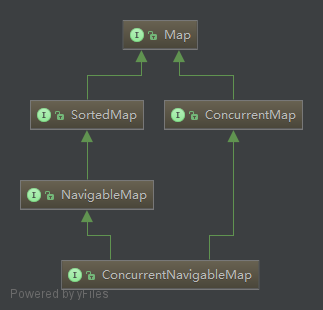1
2
3
4
5
6
7
8
9
10
11
12
13
14
15
16
17
18
19
20
21
22
23
24
25
26
27
28
29
30
31
32
33
34
35
36
37
38
|
private void insertIndex(Node<K,V> z, int level) {
HeadIndex<K,V> h = head;
int max = h.level;
if (level <= max) {
Index<K,V> idx = null;
for (int i = 1; i <= level; ++i) // 建立该Node层级关系
idx = new Index<K,V>(z, idx, null);
addIndex(idx, h, level);
} else { // Add a new level
level = max + 1;
Index<K,V>[] idxs = (Index<K,V>[])new Index[level+1];
Index<K,V> idx = null;
for (int i = 1; i <= level; ++i)
idxs[i] = idx = new Index<K,V>(z, idx, null); // 建立该Node层级关系
HeadIndex<K,V> oldh; //头节点
int k;
for (;;) {
oldh = head;
int oldLevel = oldh.level;
if (level <= oldLevel) { // lost race to add level 竞争条件
k = level;
break;
}
HeadIndex<K,V> newh = oldh;
Node<K,V> oldbase = oldh.node;
for (int j = oldLevel+1; j <= level; ++j)
newh = new HeadIndex<K,V>(oldbase, newh, idxs[j], j); // 建立头节点层级关系
if (casHead(oldh, newh)) { // CAS 更新头结点
k = oldLevel;
break;
}
}
addIndex(idxs[k], oldh, k);
}
}
|

